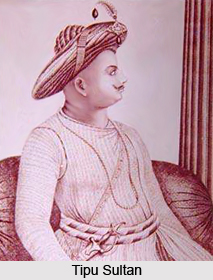 From a very ancient time the kasaragod district was famous. It lies on the northwestern coast of the State. Many Arab travelers who came to Kerala between 9th and 14th centuries A.D. invariably visited Kasargod. It was the then important trade center. They called this area Harkwillia. In 1514 Mr.Barbose the Portuguese traveler visited Kumbla near Kasargod.
From a very ancient time the kasaragod district was famous. It lies on the northwestern coast of the State. Many Arab travelers who came to Kerala between 9th and 14th centuries A.D. invariably visited Kasargod. It was the then important trade center. They called this area Harkwillia. In 1514 Mr.Barbose the Portuguese traveler visited Kumbla near Kasargod.
According to him rice was exported to Male Island whence coir was imported. Dr.Fracis Buccanan, who was the family doctor of Lord Wellesly, visited Kasargod in 1800. In his travelogue, he has included information on the political and communal set-up in places like Athiparamba, Kavvai, Nileshwar, Bekkal, Chandragiri and Manjeshwar. Kasargod was part of the Kumbala Kingdom in which there were 64 Tulu and Malayalam villages.
At the time of attack of Kasargod by Vijayanagar Empire, the district was ruled by the Kolathiri king.who had Nileswar as his headquarters. It is said that the characters appearing in Theyyam, the ritualistic folk dance of northern Kerala, represent those who had helped king Kolathiri fight against the attack of the Vijayanagar Empire.
In 14th century when the empire declined, the administration of this area was vested with the Ikkeri Naikans. They continued to be the rulers till the fall of the Vijayanagar Empire in 16th century. Then Vengappa Naik declared independence to Ikkeri.
In 1645 Sivappa Naik took the reins and transferred the capital to Bednoor. Thus they came to be known as Bendoor Naiks. Chandragiri fort and Bekkal fort are considered to be part of a chain of forts constructed by Sivappa Naik for the defense of the kingdom.
In 1763 Hyder Ali of Mysore conquered Bednoor with an intention to capture entire Kerala. But after his attempt to conquer Thalassery Fort was obstructed, Hyder Ali returned to Mysore and died there in 1782. After him his son, Tipu Sultan, continued the attack and conquered Malabar. But according to the Sreerangapattanam treaty of 1792, Tipu surrendered Malabar except Tulunadu or Canara to the British.
The British got Canara only after the death of Tippu Sulthan in 1799. Kasaragod was part of Bekal taluk in the South Canara district of Bombay presidency. Kasaragod taluk came into being when Bekal taluk was included in the Madras presidency on April 16, 1882. Though Vengayil Kunhiraman Nayanar moved a resolution in 1913 on the floor of Madras Governor`s Council demanding the merger of Kasargod taluk with the Malabar district, it had to be withdrawn because of the stiff opposition of the members from Karnataka. In 1927,a political convention held at Kozhikode, passed a resolution stressing the above demand.
An organization titled Malayalee Seva Sangham was constituted in the same year. Many eminent persons like K.P.Keshva Menon, Kasargod became part of Kerala following the reorganisation of states and formation of Kerala in November 1,1956.
Kasargod played a prominent role in the National Movement for the freedom of the country. Mohammed Sherul Sahib and Kandige Krishna Bhat were the frontline leaders of the independence movement. Some of the prominent freedom fighters of our independence movement were from this district namely Umesh Rao, K.M.Krishnan Nambiar, Shreesankarji, Naranthatta Raman Nair, A.C.Kannan Nair, T.Gopalan Nair,
and Meloth Narayanan Nambair.
The agrarian struggles to end the exploitation and oppression by landlords and leaders were part of the National Movement. The Kadakom Sathyagraha various struggles unleashed for the uplift of the scheduled castes and tribes also supported and enlivened in National Movement.






